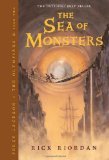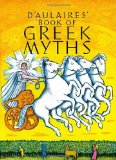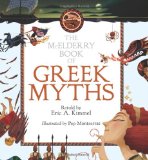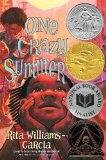 The Battle of the Labyrinth by Rick Riordan is the 4th book in the Percy Jackson and the Olympians Series.
The Battle of the Labyrinth by Rick Riordan is the 4th book in the Percy Jackson and the Olympians Series.
I’m still having a great deal of fun reading these (yes, my enjoyment has increased greatly since the first book). I’m actively looking forward to getting to The Last Olympian. Battle of the Labyrinth adds a few new characters (including my new favorite pet, Mrs. O’Leary, the hellhound) but I haven’t gotten to the point where there are too many to keep track of. This may be because I’m reading them back to back.
Percy’s life continues to be in danger for much of the book and he and Annabeth must again work together to try to save Camp Half-Blood. This time they must navigate the famous labyrinth which once contained the Minotaur but now has spread and grown creating a dangerous weapon for anyone who can master its secrets. Percy and Annabeth are older now (15!) and they not only have to figure out what’s going on with their enemies, but what’s going on with each other (don’t worry, it’s still all very innocent).
Sex, Nudity, Dating – Our characters are growing up, so the books are growing up a bit with them. There is a bit of handholding and hugging as well as a kiss. But for the most part, it’s just boys and girls trying to figure out what friendship means at this age. Grover has a dryad girlfriend. Some vampire like creatures demand a kiss from Percy. Hera references Zeus having children with people other than her, his wife. Annabeth explains how Athena has children even though she’s a maiden goddess. Calypso talks about falling in love.
Profanity – Does hell count if it’s part of “hellhound”?
Death, Violence and Gore – Some monsters are killed. Nico raises the dead. I cannot begin to comment on how many skeletons. Kampe is a very scary monster. There are flesh eating horses (who aren’t that scary). We’re told how King Midas died, basically being mummified in bronze. Anteus kills people and decorates his arena with their skulls. A centaur is murdered. There is a battle worse than those prior, where campers are actually killed. It’s this part of the book where things are certainly more perilous and scary than in the prior books. A character is possessed. Campers are threatened with being flayed alive.
Drugs, Alcohol and Smoking – None.
Frightening or Intense Things – Pretty much described in the death and gore section.









